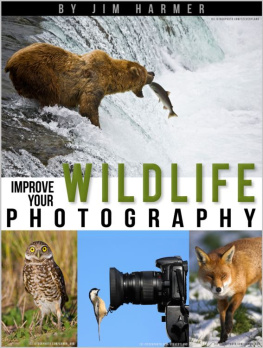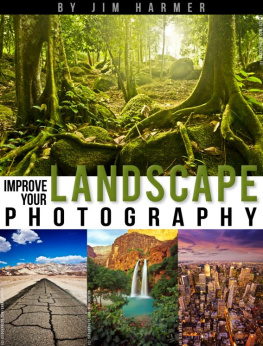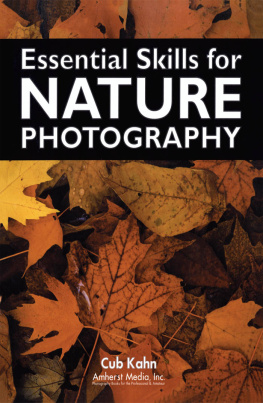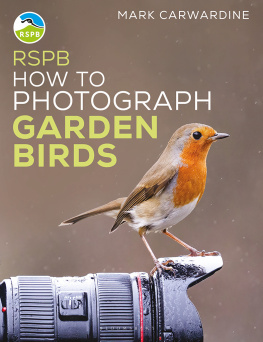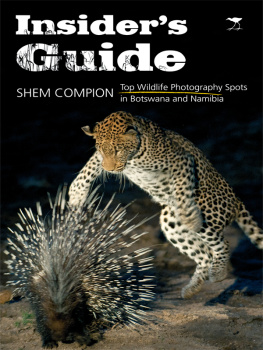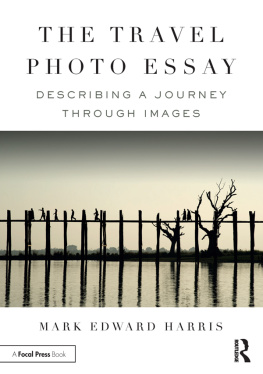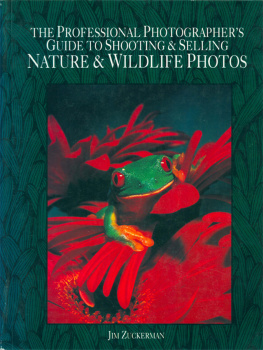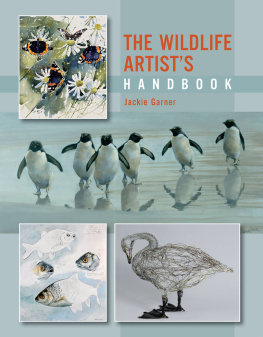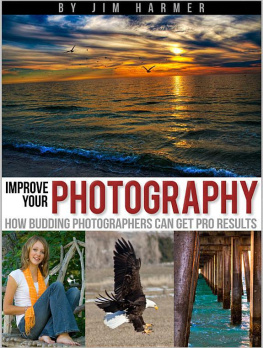Harmer - Improve Your Wildlife Photography
Here you can read online Harmer - Improve Your Wildlife Photography full text of the book (entire story) in english for free. Download pdf and epub, get meaning, cover and reviews about this ebook. publisher: Jim Harmer, genre: Romance novel. Description of the work, (preface) as well as reviews are available. Best literature library LitArk.com created for fans of good reading and offers a wide selection of genres:
Romance novel
Science fiction
Adventure
Detective
Science
History
Home and family
Prose
Art
Politics
Computer
Non-fiction
Religion
Business
Children
Humor
Choose a favorite category and find really read worthwhile books. Enjoy immersion in the world of imagination, feel the emotions of the characters or learn something new for yourself, make an fascinating discovery.
- Book:Improve Your Wildlife Photography
- Author:
- Publisher:Jim Harmer
- Genre:
- Rating:4 / 5
- Favourites:Add to favourites
- Your mark:
- 80
- 1
- 2
- 3
- 4
- 5
Improve Your Wildlife Photography: summary, description and annotation
We offer to read an annotation, description, summary or preface (depends on what the author of the book "Improve Your Wildlife Photography" wrote himself). If you haven't found the necessary information about the book — write in the comments, we will try to find it.
Harmer: author's other books
Who wrote Improve Your Wildlife Photography? Find out the surname, the name of the author of the book and a list of all author's works by series.
Improve Your Wildlife Photography — read online for free the complete book (whole text) full work
Below is the text of the book, divided by pages. System saving the place of the last page read, allows you to conveniently read the book "Improve Your Wildlife Photography" online for free, without having to search again every time where you left off. Put a bookmark, and you can go to the page where you finished reading at any time.
Font size:
Interval:
Bookmark:
IMPROVE YOUR WILDLIFEPHOTOGRAPHY
By Jim Harmer
SMASHWORDS EDITION
* * * * *
PUBLISHED BY:
Jim Harmer and Smashwords
Improve Your Wildlife Photography
Copyright 2010 Jim Harmer. All rightsreserved
IF YOU LEARN SOMETHING FROM THIS BOOK, PLEASEBE SO KIND AS TO PROVIDE THIS BOOK WITH A POSITIVE REVIEW ON THEONLINE BOOKSTORE FROM WHICH IT WAS PURCHASED.
All rights reserved. Without limiting therights under copyright reserved above, no part of this publicationmay be reproduced, stored in or introduced into a retrieval system,or transmitted, in any form, or by any means (electronic,mechanical, photocopying, recording, or otherwise) without theprior written permission of both the copyright owner and the abovepublisher of this book.
This is a work of non-fiction, but allexamples of persons contained herein are fictional. Persons,places, brands, media, and incidents are either the product of theauthor's imagination or are used fictitiously. The trademarkedand/or copyrighted status and trademark and/or copyright owners ofvarious products referenced in this work of fiction, which havebeen used without permission, is acknowledged. The publication/useof these trademarks and/or copyrights isnt authorized, associated,or sponsored by the owners. The copyright notice and legaldisclaimer at the end of this work is fully incorporatedherein.
Smashwords Edition License Notes
This ebook is licensed for your personalenjoyment only. This ebook may not be re-sold or given away toother people. If you would like to share this book with anotherperson, please purchase an additional copy for each person youshare it with. If you're reading this book and did not purchase it,or it was not purchased for your use only, then you should returnto Smashwords.com and purchase your own copy. Thank you forrespecting the author's work.
* * * * *
Dear Reader,
This book is targeted to beginning andintermediate wildlife photographers who want to increase the dramaand beauty of their wildlife images. While some of the chapters inthis book touch on subjects such as gear and camera settings, themain thrust of this book is technique.
Wildlife photography is beautiful because itoften places me in locations that only God has touchedno telephonepoles, no cars, no laptops, and definitely no Twitter. As youcapture the lives of animals at the speed of 1/1000th ofa second, remember the Creator of the beautiful animals yourecord.
Regards,
Jim Harmer
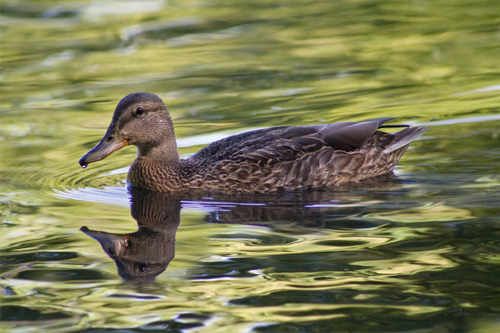
* * * * *
Almost universally, photographers make thesame mistake in their wildlife photography. The mistake is takingwildlife photos the same as one would take a portrait of a person.The result of this error is what I call the cheap studio effect.I call it that because of the dull and boring wallet-sized imagesevery time I go to a department-store studio and get photographedon cheesy blue backgrounds.
In wildlife photography, the cheap studioeffect can be seen where a photographer takes a boring headshot ofan animal without including any of the background. While this typeof shot may look fine on an advertisement for a zoo, it does notimpact the viewer of the photograph. For a wildlife photo to standout from the crowd, it must reach out and grab the viewer by theeyeballs and demand attention to the drama in the photograph. Thefollowing sub-topics will help you to advance your
One key to any successful wildlife photo isthe animals eye. Without exception, the eye must be in perfectfocus. The most compelling eyes usually have catch-lights in them.Catch-lights are the bright spots of light that appear on shinyobjects when illuminated. Some refer to the effect of catch-lightson an animals eye as specular highlights.
So you agree that the eyes are important, butwhy do photographers go to such great lengths to get specularhighlights in the animals eyes? The answer is that photos are 2dand animals are 3d. Photographers must do all they can to giveobjects depth and the feeling of shape, and the specular highlightdoes exactly that. When viewing a flat object like a photo, ourbrains take in visual cues that may convey that the object isactually three dimensional. Specular highlights provide a strongvisual cue for the shape of an object and its location relative tolight source.
Specular highlights often appear naturallywhen the ambient light in a scene hits the eyes of an animal, butoften the animal will be positioned with its back to the lightsource. To achieve catch-lights in an animal not facing the lightsource (generally the sun), the answer is flash photography. Flashphotography will be discussed in a later chapter.
Aside from this technical consideration,consider the position of the animal. Many animal shots look greatwhen the animal is looking away from the camera; however, capturingan image of an animal as both eyes stare squarely into the lenswill undoubtedly grab the attention of the viewer.
To apply this principle of the two-eyed staredown to increase the drama of a photo, shoot the animal for a whileand get as many photos as you want. When you feel like youvecaptured the animal in its natural habitat, make the animal awareof your presence. Stand up from your hiding place, wave your arms,etc. When a photographer does this, most species will notimmediately sprint away. Most animals respond to this suddenstimulus by quickly staring directly at the motion for a minutebefore running or flying away. By doing this, you get theenvironmental portraits of the animal and then a second look at theanimal in a more dramatic pose. Use care when applying thistechnique to not disturb the animal nor put yourself in danger ifapproaching a dangerous animal.
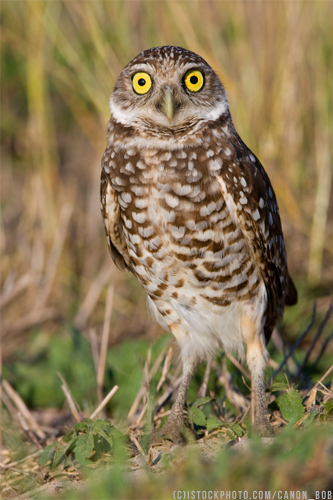
Nothing screams zoo photography likewildlife photography taken from standing height looking down on ananimal on the ground. There is no drama in this angle because it isthe angle that we are used to seeing wildlife from.
Portrait photographers understand shootingangles better than any other type of photographer. Portraitphotographers commonly get low to the ground and shoot up toward asubject in order to give them power and make them seem large. Forexample, if shooting a CEO in front of the large corporate office,any portrait photographer with have a brain would instinctively geton the ground and shoot up toward the CEO to give him power.Conversely, shooting down on a subject makes it seem small,feminine, and dainty. Taking this lesson from portraitphotographers, youll do well to consider whether you want to givethe animal power by getting low to the ground, or taking away powerfrom the animal by shooting from above it. In most situations,wildlife photography will look best when shooting from a low angletoward the wildlife.
The importance of shooting from a low angleis lessened as the subject-to-lens distance narrows. For example,if shooting from only a few feet away from an egret, the low anglewill be apparent in the photo. If shooting the same egret from 100feet away, the importance of the angle is lessened.
Images of animals increase in drama when thesurroundings of the animal are considered. A photo of a desert witha deep black storm approaching in the distance is far more dramaticand impactful than the same scene on a sunny day. Use the drama inthe background to highlight the dramatic surroundings of thewildlife you photograph. While many photographers tend to stay homeon rainy, snowy, or otherwise unpleasant days, the experiencedwildlife photographer will seize the opportunity and capturebeautiful dramatic images of wildlife in the elements.
Next pageFont size:
Interval:
Bookmark:
Similar books «Improve Your Wildlife Photography»
Look at similar books to Improve Your Wildlife Photography. We have selected literature similar in name and meaning in the hope of providing readers with more options to find new, interesting, not yet read works.
Discussion, reviews of the book Improve Your Wildlife Photography and just readers' own opinions. Leave your comments, write what you think about the work, its meaning or the main characters. Specify what exactly you liked and what you didn't like, and why you think so.

